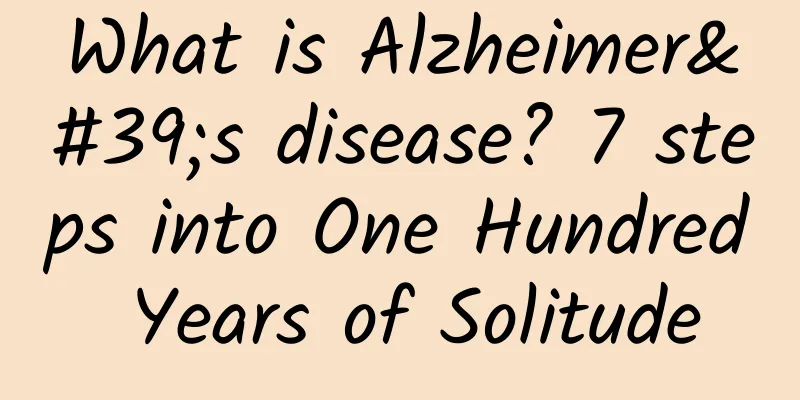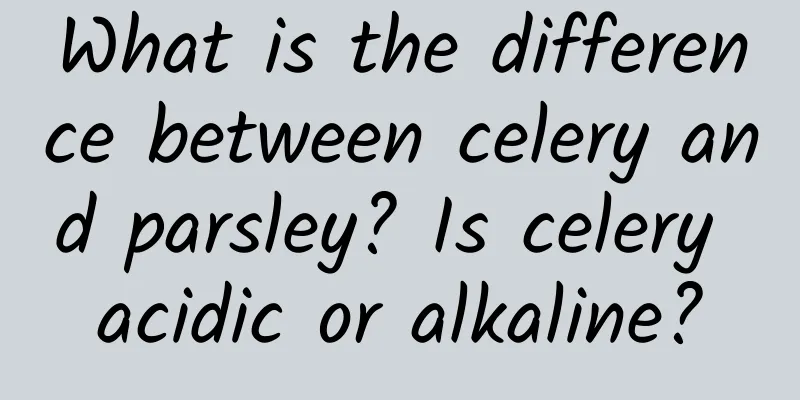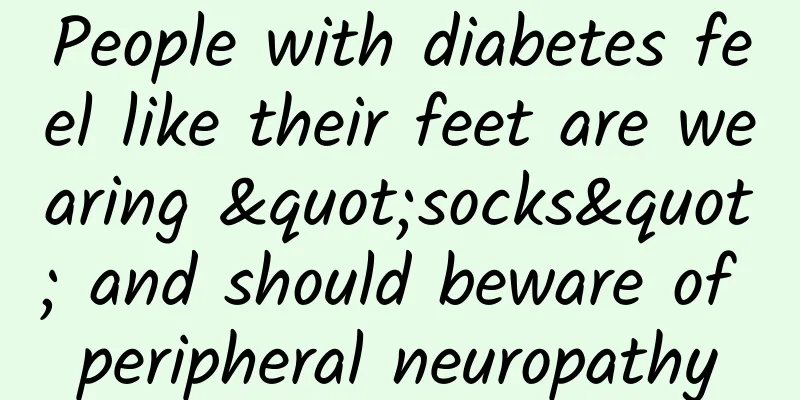What is Alzheimer's disease? 7 steps into One Hundred Years of Solitude

|
Author: SELF Gezhi Lundao Forum The article comes from the Science Academy official account (ID: kexuedayuan) —— Speaker: Gao Nan (Changchun Institute of Applied Chemistry, Chinese Academy of Sciences) I used to be like thousands of young researchers, living a life of going to and from work every day, working in the laboratory hoping that one day I would get a professional title, a grant, a CNS (three world-class academic journals: Cell, Nature, and Science), or all of them. But three years ago, an inadvertent conversation changed my path to scientific research. In the autumn three years ago, I met an old professor on the road. The old professor was from a famous university in my country. He studied mathematics. He asked me, "Young man, what do you do?" I said, "Old man, I study Alzheimer's disease." "Oh, what is that disease?" I said, "It is also commonly known as senile dementia." "Oh, young man, what's the point of studying this topic? When people get old, they all become demented." At that time, the old professor laughed like you (the audience). But I didn't laugh at all. I suddenly realized that scientific research is not done in this way. Scientific research cannot be successful just by staying in the laboratory. Scientific research should have its other social responsibilities and obligations. So, I used more of my research breaks to step out of the laboratory and tell everyone what Alzheimer's disease really is. Opening any textbook, we will see that Alzheimer's disease, commonly known as senile dementia, is characterized by extracellular senile plaque deposition in the brain, fibrillary tangles in nerve cells, abnormal synaptic function, and massive neuronal loss. Clinically, it manifests as memory impairment, aphasia, agnosia, impairment of visual-spatial skills, executive dysfunction, and changes in personality and behavior. Explanation of Alzheimer's disease in textbooks How many of you here still remember the explanation in the textbook? I believe that 90% of you may not remember what is said above, but this does not mean that you are patients, it only means that popular science or scientific research is not done this way. So, what is the real Alzheimer's disease? Let me tell you, you only need to remember four words - One Hundred Years of Solitude. If your memory is better, you can remember two more words, which are: My name is Gao Nan, from the Changchun Institute of Applied Chemistry, Chinese Academy of Sciences. Today, let me tell you what the real "One Hundred Years of Solitude" is, and what the real Alzheimer's disease is. history The four words "One Hundred Years of Solitude" have three meanings in total. First, its history. The discovery of this disease originated from a conversation a hundred years ago. This conversation took place on November 25, 1901 in Frankfurt, Germany. There were two people, one was Dr. Alzheimer, whom we all know, and the other was his first patient, August Tiett. Of course, they used German, which I translated into English. The doctor first asked: "What's your name?" "My name is August." "What's your last name?" "My last name is August." "What's your husband's name?" "August." Then the doctor asked her: "Are you married?" "I'm not sure." Demonstration of a conversation between an Alzheimer's doctor and his patient August At noon, the doctor asked August to eat some pork and cauliflower, and then asked her: "What did you eat?" "Spinach." "Let me ask you again, what did you eat?" "First I ate potatoes, and then some mustard." The doctor was speechless: "Write a 5." She wrote "A woman." Then the doctor asked her to write an 8, and she wrote "August." Demonstration of a conversation between an Alzheimer's doctor and his patient August What do we think of through such a simple conversation? At this time, if you look at the symptoms of Alzheimer's disease again, will you understand it more clearly? Memory impairment, right? Aphasia, agnosia, and executive dysfunction, right? I will talk about personality and behavioral changes later. Through a simple conversation, we have a deeper understanding of this disease. Many people ask me, how can I judge? What symptoms do people around me have that indicate they are about to get this disease? This is the second meaning of "One Hundred Years of Solitude", its symptoms. symptom Alzheimer's disease is divided into seven stages from the onset of the disease to the final stage. The first stage, I call it "no trace". Although the neurons in the patient's brain begin to die, the number of deaths is not enough to affect normal life and expression of thoughts. There is no scientific and technological means to detect this stage. Alzheimer's first stage In the second stage, is this person senile? Here I want to focus on the difference between senile confusion and Alzheimer's disease. In the general sense, senile confusion is just a natural decline in organ function due to aging, so people's memory and behavioral abilities decline to a certain extent. However, although senile confusion can gradually become more serious over time, it will not become so serious that family members have to accompany him throughout his life, while Alzheimer's disease is not like that. As time goes by, it will become more and more serious. Therefore, senile confusion and what we call senile dementia are two completely different concepts. So, let's go back to the conversation I mentioned at the beginning. Through that conversation, I found that even senior intellectuals in universities still have a very simple understanding of this disease. So for researchers in this field, we need to spread more relevant knowledge to everyone. Alzheimer's second stage Then, as time goes by, the disease will develop into the third stage, which is strange amnesia. People will forget some things when they get old, but this forgetfulness is too strange. They always forget what happened just now, but still have some memories of things that happened decades ago. This stage is also the only golden time window for treatment among the seven stages of Alzheimer's disease. Although current medicine cannot reverse this disease, if patients can receive correct treatment in the hospital at this stage, it will greatly delay the progression of the disease, significantly improve the patient's quality of life in the next few decades, and reduce the heavy burden on the patient's family. Please remember that there is only one golden time window for treatment. That is to say, when the elderly around you experience "strange forgetfulness", please take them to see a doctor quickly. There is only one time window. Alzheimer's disease stage 3 If they do not seek medical attention in time, unfortunately, they will develop into the fourth stage, mild or early Alzheimer's disease. The main symptoms are: Oh, what did I say just now? Did I eat just now? I don't know, I have forgotten everything. However, at this time, they can still take care of themselves. Alzheimer's stage 4 As time goes by, it will enter the fifth stage - moderate or mid-stage Alzheimer's disease. At this time, the patient completely needs the company of his family members. He can no longer take care of himself. He will forget time and space. Well, just like the first patient we talked about earlier, Tite, she also found an Alzheimer's doctor at this stage. Similarly, most patients in our country are sent to the hospital at this stage. Although it is a little late at this time, it is still a correct choice to be able to seek medical treatment in time. Alzheimer's stage 5 Later, the disease progresses to the sixth stage, which we call moderate or severe Alzheimer's disease. This period has a typical feature, the patient's behavior will change significantly, they may become very irritable, get angry for no reason, throw things, hit people, and curse people. However, it is not that they don't love us anymore, they are not really angry, but a large number of neurons in their brains have died, and there is no way for them to exercise normal thinking functions. Please don't despise them at this time, please love them, because at this time they can still distinguish between relatives and strangers. Alzheimer's stage 6 The last stage is also when "One Hundred Years of Solitude" appears for the second time. Someone once asked me: "My mother has Alzheimer's disease. I am her only son, her dearest son. Will she remember me in the end?" I said cruelly: "I'm sorry, she can't even remember herself, let alone you." At this stage, the patient is like living on a foreign planet. He can't recognize what he sees, and he can't understand what he hears. He can only live alone. This process is very long, as long as 100 years, or even longer than 100 years, and there is no end. Now, when you look at Alzheimer's disease again, do you have a clearer understanding of memory impairment, aphasia, agnosia, executive dysfunction, personality and behavioral changes? At this time, we have a basic understanding of Alzheimer's disease. Celebrities Suffering from Alzheimer's Disease In order to deepen your understanding, let me talk about the third meaning of "One Hundred Years of Solitude". I guess when I say these four words, many people will think of this old man and this book. Why do I single him out? Gabriel García Márquez, winner of the 1982 Nobel Prize in Literature, is a very typical patient with familial Alzheimer's disease. Someone once asked me, "My parents have had Alzheimer's disease, and my sister has also had it. Will I have it too?" I told him, "No, because the incidence of familial Alzheimer's disease is less than 5%, and most of them are still sporadic." So, don't worry about repeating the same mistakes just because your family has relatives with the disease. No, the incidence of familial Alzheimer's disease is very low. Gabriel García Márquez and One Hundred Years of Solitude Similarly, we are familiar with the Iron Lady Margaret Thatcher and former US President Ronald Reagan. In her later years, the Iron Lady Margaret Thatcher refused to read newspapers because when she read the last sentence, she had already forgotten what was said before. In his later years, Mr. Reagan only knew his wife and no one else. However, when Mr. Reagan learned that he had Alzheimer's disease, he contacted the media immediately and asked the media to disclose all the details of his life to show the public what the disease is like, hoping that this would increase public awareness of Alzheimer's disease. Therefore, the United States is the first country to establish "Alzheimer's Disease Memorial Day", which is more due to Mr. Reagan. Similarly, there is a British politician who suffers from Alzheimer's disease - James Harold Wilson. He was elected British Prime Minister twice, and resigned in 1976 due to a diagnosis of Alzheimer's disease. When he resigned, the Queen of England went to Downing Street to hold a farewell dinner for him in order to thank him for his contributions. In British history, he is the second politician to enjoy such treatment, the first being Churchill. Prime Minister Wilson is actually the most unfortunate of all celebrities. He suffered from Alzheimer's disease for 19 years. Politicians with Alzheimer's Someone asked me, you talked about politicians before, I am not interested in politics, if I become a scientific researcher like you, I will not get sick, right? Sorry, please look at the 2009 Nobel Prize winner in Physics - Kao Chung, he was diagnosed with Alzheimer's disease in 2004. When he went on stage to receive the award in 2009, the emcee could not remember the award-receiving process no matter what he said, and finally he completed the award-receiving process with the help of others. Some people say, I don't want to be a scientist either, I want to do business. Well, let's look at the owner of the NBA Los Angeles Clippers, Donald Sterling, who has been in charge of a team for more than 30 years and is a very shrewd Jewish businessman, but still couldn't escape the clutches of disease (Alzheimer's disease) in his later years. Some people say that you intellectuals are too weak, I want to be a strong person. Let me show you the real West German "bomber" Gerd Muller. FIFA once did a statistics, from the beginning of official historical records, who is the man who scored the most goals on the planet? It is Gerd Muller. In 2014, he was lost in Italy, and when he was found, he had been diagnosed with Alzheimer's disease. Celebrities with Alzheimer's disease Some people also said, you mentioned a lot of people before, I am a beauty, is it okay to be a beauty? It's a pity. Let's look at the American "Goddess of Hope" Rita Hayworth. Many people may be unfamiliar with this name, but the famous American writer Stephen King once wrote a novella called "Rita Hayworth and the Shawshank Redemption". When this novel was adapted into a movie, the director thought the name was too long, so he changed it to "The Shawshank Redemption". In the film, young people in prison gathered together, looking at Rita's graceful figure, and looking forward to their happy life after being released from prison. During World War II, countless young soldiers on the battlefield didn't know which would come first, tomorrow or doom, so they competed to collect photos of Rita. American soldiers also pasted the photo of this goddess on the first atomic bomb tested by the United States. Many people have seen the movie "The Shawshank Redemption". In the end, Andy dug a hole in the wall and ran out. The poster he used to cover the hole was this goddess. Behind Rita is the passage to freedom and hope, so she is called the "Goddess of Hope" in the United States. However, even such a goddess of hope could not escape the clutches of this disease in her later years. She first found that she could not remember long lines, and later she was found standing in the middle of the road at a loss, not knowing how to hide when a car came. Later, the local court had to force her second daughter to take care of her life. Features So, through the above examples and stories of these celebrities, can we summarize some other characteristics of Alzheimer's disease? The first characteristic is the long course of the disease. It is common to see cases that start from seven or eight years and end in twenty or thirty years. In addition, you should remember two key words, one is "fourth" and the other is "total". What is "fourth"? The mortality rate of Alzheimer's disease ranks only fourth among all human diseases, lower than cancer, stroke, cardiovascular and cerebrovascular diseases. What is "total"? The total cost of caring for Alzheimer's patients is more than the total of the first three diseases. Why? Because the course of the disease is long. The second characteristic is, why does Alzheimer's disease occur? Is it related to the patient's race? Is it related to occupation? Is it related to social status? Is it even related to gender? I can tell you that none of them have anything to do with it. Current research shows that it is only related to age. When the patient gets older, the incidence rate will increase sharply, so we must be kind to the elderly around us. Especially when they are old, we must carefully observe whether they have corresponding symptoms. Alzheimer's disease incidence is only related to age In our country, there were 15 million patients on record in 2016, accounting for about 1% of the total population. In fact, this 1% does not mean that only 1% of people suffer from the disease, but only these 15 million people. Many patients with Alzheimer's disease are elderly people. They have children, grandchildren, and even great-grandchildren. If one person gets sick, the whole family has to take care of him, so the number of people affected by Alzheimer's disease is very large. More importantly, in 2017, the number of people aged 60 and above in my country exceeded 17.3% of the total population. What does this mean? According to international practice, if the proportion exceeds 10%, it means that the country has entered an aging society. In 2017, my country has already made great strides into this aging society. It is estimated that the number of elderly people in my country will reach more than 480 million by 2050, which means that the potential number of people suffering from Alzheimer's disease is very large. The public in my country is still at a very superficial stage in understanding this disease, so more scientific researchers are needed to come forward and introduce this disease to everyone. Pathogenic hypotheses and treatment options At present, the most important means to fight this disease is still prevention. CCTV once published a "CCTV 12 Prevention Methods", which include not smoking, reducing the intake of salt, sugar and oil, not drinking or drinking less, regular physical exercise, eating foods rich in choline, etc. Have you noticed that none of them is specific to this disease, and all these prevention methods can actually be used to prevent colds. Why? Because how this disease occurs, its exact mechanism is still unknown. 12 Ways to Prevent Alzheimer's Disease There are dozens of hypotheses about the cause of Alzheimer's disease, and they are very interesting and they evolve over time. What are the early hypotheses? Head trauma, low education level, thyroid disease, maternal age is too high or too low, viral infection, etc. Three or four years ago, The Lancet introduced a set of nine factors, which became: less than 12 years of education, high blood pressure, obesity, diabetes, lack of exercise... Do you think they are gradually becoming more and more relevant to our lives? What was the hypothesis a year or two ago? Stressful life, smog, poor environment, and obstructive sleep apnea, in other words, snoring. If this trend continues, what will be the hypotheses for Alzheimer's disease in the next two or three years? Let me tell you: traffic jams, high housing prices, children's schooling, and elderly people's medical treatment. This hypothesis is also gradually evolving over time. Of course, I was joking just now. The current mainstream research direction is this: the left picture is a brain slice of an Alzheimer's patient, and the right picture is a brain slice of a normal person. We can see that the patient's brain has shrunk dramatically, and there are many holes, which indicates that their neurons have died in large numbers. When we zoom in on the pathological photos, we can find that there are many amyloid plaques deposited around the neurons, and there are some fiber tangles inside the neurons. It is now generally accepted that extracellular amyloid deposition is a very important factor in the occurrence and development of this disease. If we zoom in on the amyloid plaque, what will we see? It is composed of a protein called β-amyloid protein, or Aβ for short. Comparison chart This shows that Alzheimer's disease is different from common colds and diarrhea. Colds and diarrhea are caused by external viruses or bacteria infecting our bodies, which in turn lead to diseases. However, Alzheimer's disease is not caused by the misfolding and aggregation of our own proteins. β-amyloid protein is also expressed in normal people, but it is expressed at a high level in patients. It has structural errors and aggregates, precipitating around neurons, leading to the death of a large number of neurons. At this point, can you guess the current treatment direction? You can guess it, right? I can inhibit its aggregation, right? Or I can dissolve the aggregated proteins, or hydrolyze the excess expressed proteins, right? All are possible. These methods are also the main research directions of our research group. We will design specific targeted inhibitors based on the special structure and amino acid sequence of proteins, or we will design some mimetic enzymes with special hydrolysis capabilities to hydrolyze excess β-amyloid protein. Many of these works have entered the level of transgenic mice, and we also look forward to the day when our scientific research results can leave the laboratory earlier. Current research directions However, there are still three unsolved mysteries in the field of Alzheimer's disease. One is what is its true pathogenesis? It is still unknown. β-amyloid protein is only a hypothesis currently recognized by science, and the real reason remains to be explored. Second, it is gradually discovered clinically that a very small number of patients diagnosed with Alzheimer's disease are not demented. Why is this? There is still no reasonable explanation. Third, there seems to be a seesaw relationship between Alzheimer's disease and cancer, that is, when a person suffers from one of the diseases, the risk of suffering from another disease is decreasing. Why is this? There is still no explanation. Popularize science to young people Therefore, in order to popularize knowledge about Alzheimer's disease to more people, I and several like-minded friends have set up a public account. Our public account is called Shansi Science, and our slogan is "Shansi Science, let science be closer to you." Then, we also did a series of offline activities, such as going to some junior high schools and high schools to do some activities for everyone. Someone asked me why I wanted to popularize Alzheimer's disease to young people? I said I would give you three things: First, a megaphone. Young people are the most active group in spreading knowledge, and I need them to spread this knowledge. Second, I would give you a door. By telling young people about these things, I would open the door to science for them. Third, a key. Offline science activities There is a joke online now, saying that it was not Uni-President and Jinmailang that defeated Master Kong, but Meituan and Ele.me; it was not Sony that made Nikon close its Chinese factory, but smartphones; it was not the police that eliminated thieves, but WeChat and Alipay. So, I believe that the key to conquering Alzheimer's disease may not lie with us frontline scientific researchers, but with one of you in the audience, or with a young person. So, this is why I spread this popular science knowledge to young people. I will end my conversation today with two pictures. In the book One Hundred Years of Solitude, the whole book begins when the major touched the ice in the tent for the first time as a child, which started the lonely journey of this family of seven generations for 100 years. 107 years later (from the discovery of Alzheimer's disease to 2018), today we have to break these lonely ice blocks and release more elderly people from loneliness. I believe that with the successive efforts of generation after generation of young scientists, their youth, wisdom and passion will push this icebreaker forward with difficulty and determination. An ice-breaking trip I can tell you a good news. In 2018, the National Institutes of Health (NIH) approved a large number of applications for the treatment of Alzheimer's disease. Subsequently, other major scientific research countries in the world will increase their investment in this field. With the increase in investment and people's attention, I believe that in the near future, we will be able to liberate all patients from the lonely ice, let them return to our warm families, and let them know that our love is warm. I would like to thank my supervisor, Xiaogang Qu, a researcher at the Changchun Institute of Applied Chemistry, Chinese Academy of Sciences. I would like to thank the other five main creators of Shansi Science, Haitao, Yuanzhang, Laobai, Laocai, and Xiaochang. I would like to thank my junior sisters in the lab for scrambling to put cosmetics in my bag before I left, even though I still don’t know how to use them. I would like to thank my junior sister when I was studying for my doctorate for coming to the scene today to cheer me up. I would like to thank the beautiful teachers of the SELF forum for their warm invitation, and I would also like to thank all the audience for their enthusiastic arrival today. Although I didn’t see anyone crying, I was satisfied when I saw all of you laughing. Thank you everyone! |
<<: What are the benefits of eating lemons? Why do we add lemons to oysters?
>>: What are the uses of lemons? How to clean lemons?
Recommend
What department should I go to for delayed menstruation?
Women nowadays pay great attention to their body ...
Does intramural fibroids affect pregnancy?
Diseases are very common in life, and the disease...
Is cervical erosion and uterine prolapse easy to cure?
Can cervical erosion and uterine prolapse be cure...
Do you sweat easily? Find out why.
The following article comes from Cui Songshuo, th...
The more you eat, the whiter your skin becomes?! The truth is...
Whitening - an eternal topic in the skin care ind...
Popularization of mental health knowledge: Classification of psychological types
Mental health is a word we often mention. Recentl...
Spreading faster! Beware of the "second-generation variant" of Omicron, cases have appeared in many countries
Recently, a new variant of the Omicron virus, num...
What are the consequences of a woman getting angry?
Nowadays, many women become irritable and angry b...
Diagram of exercises for slimming thighs for pregnant women
In our impression, many women's body shape wi...
Breast cancer is the hardest bone to chew, and the "Chinese solution" intends to treat it like this
Recently, a "Chinese solution" for the ...
Sperm leakage during ovulation
For couples who are preparing for pregnancy, they...
How to treat fallopian tube occlusion?
Once the fallopian tube is "blocked", e...
Is 37 degrees Celsius normal during ovulation?
Grasping the correct ovulation time is very impor...
What fruits are good to eat after hemorrhoid surgery? The doctor said so
Hemorrhoids are one of the most common diseases i...
How to unclog the mammary glands during lactation?
If women do not take proper care during the lacta...









